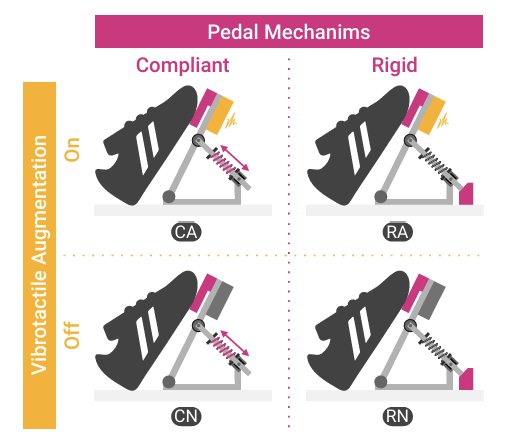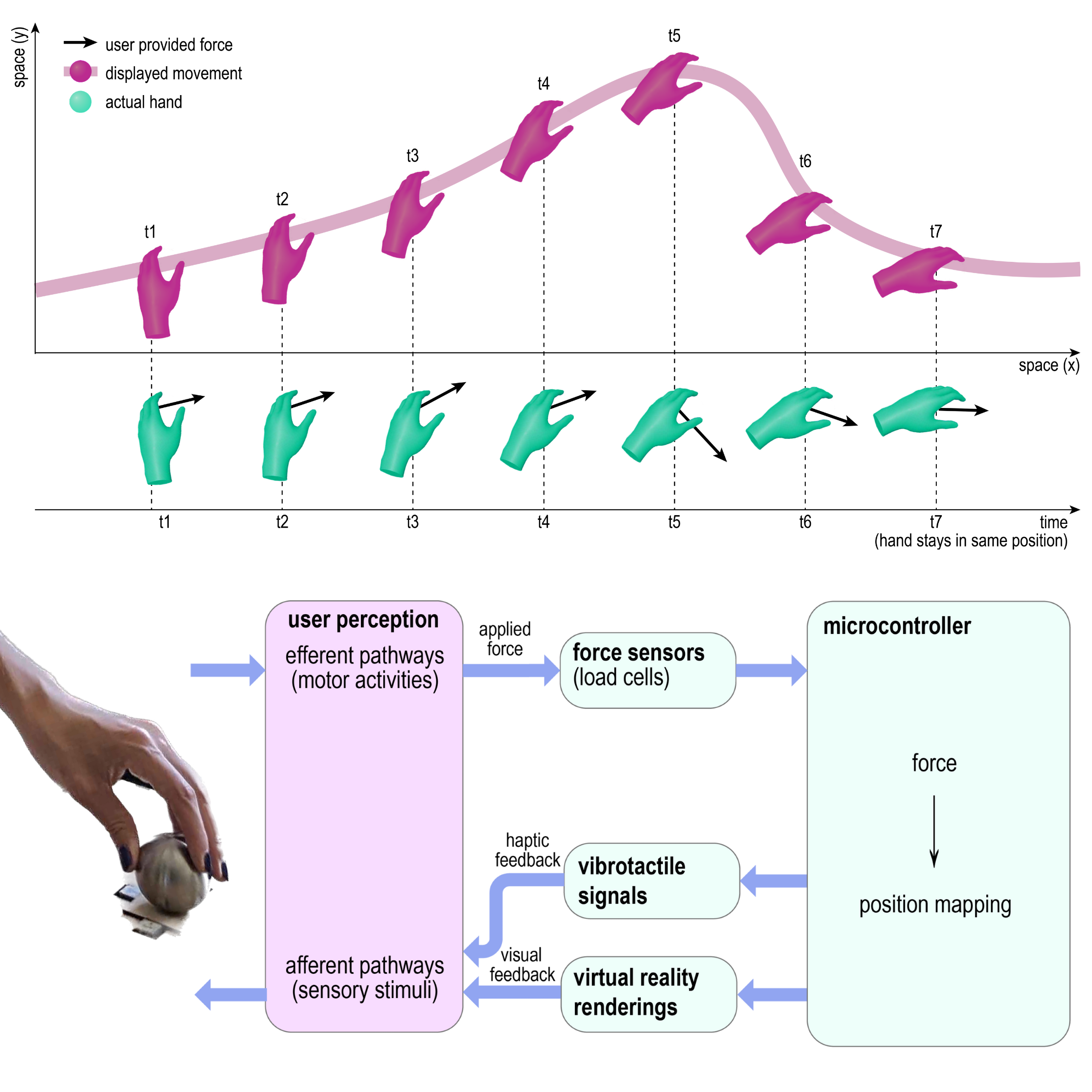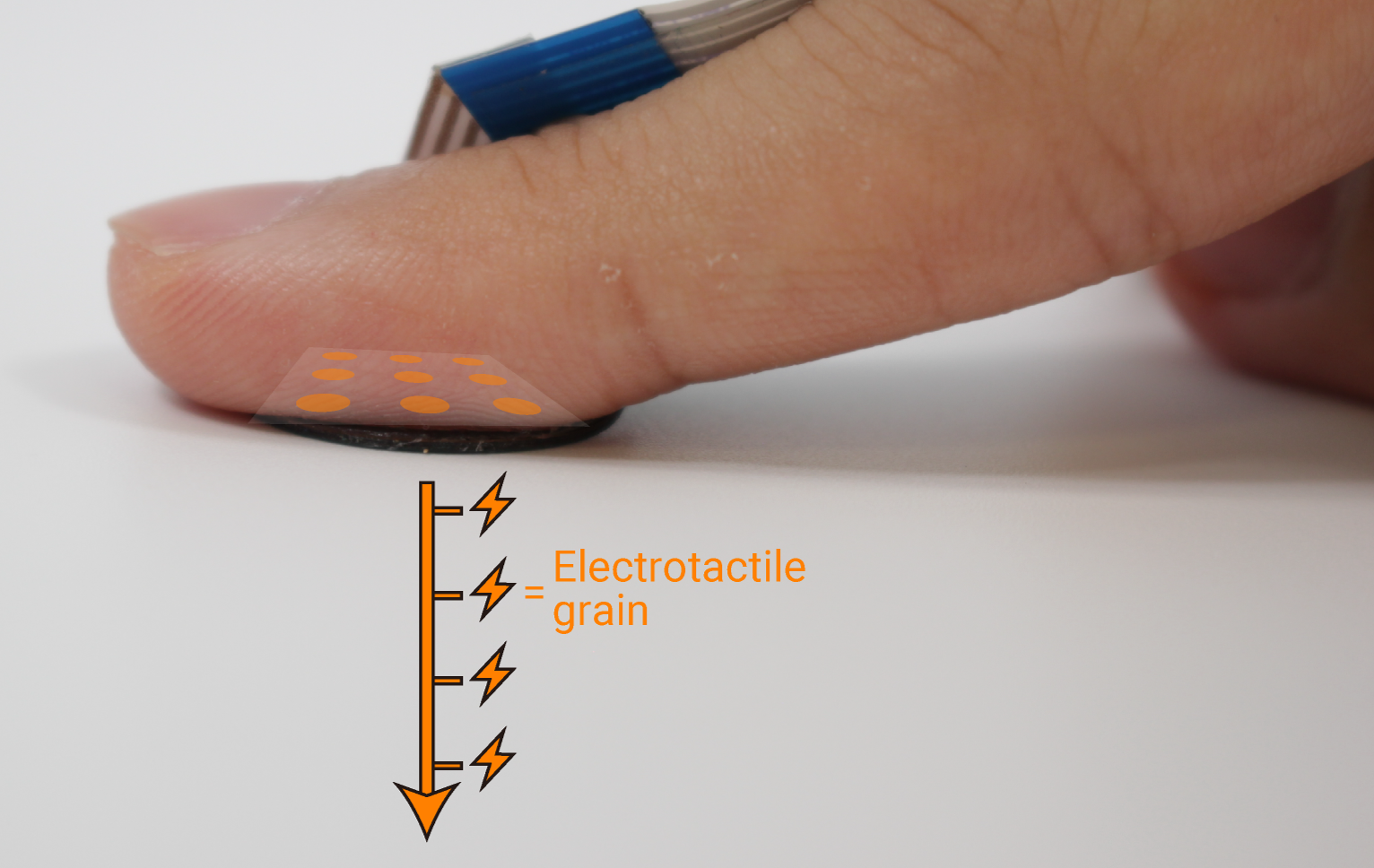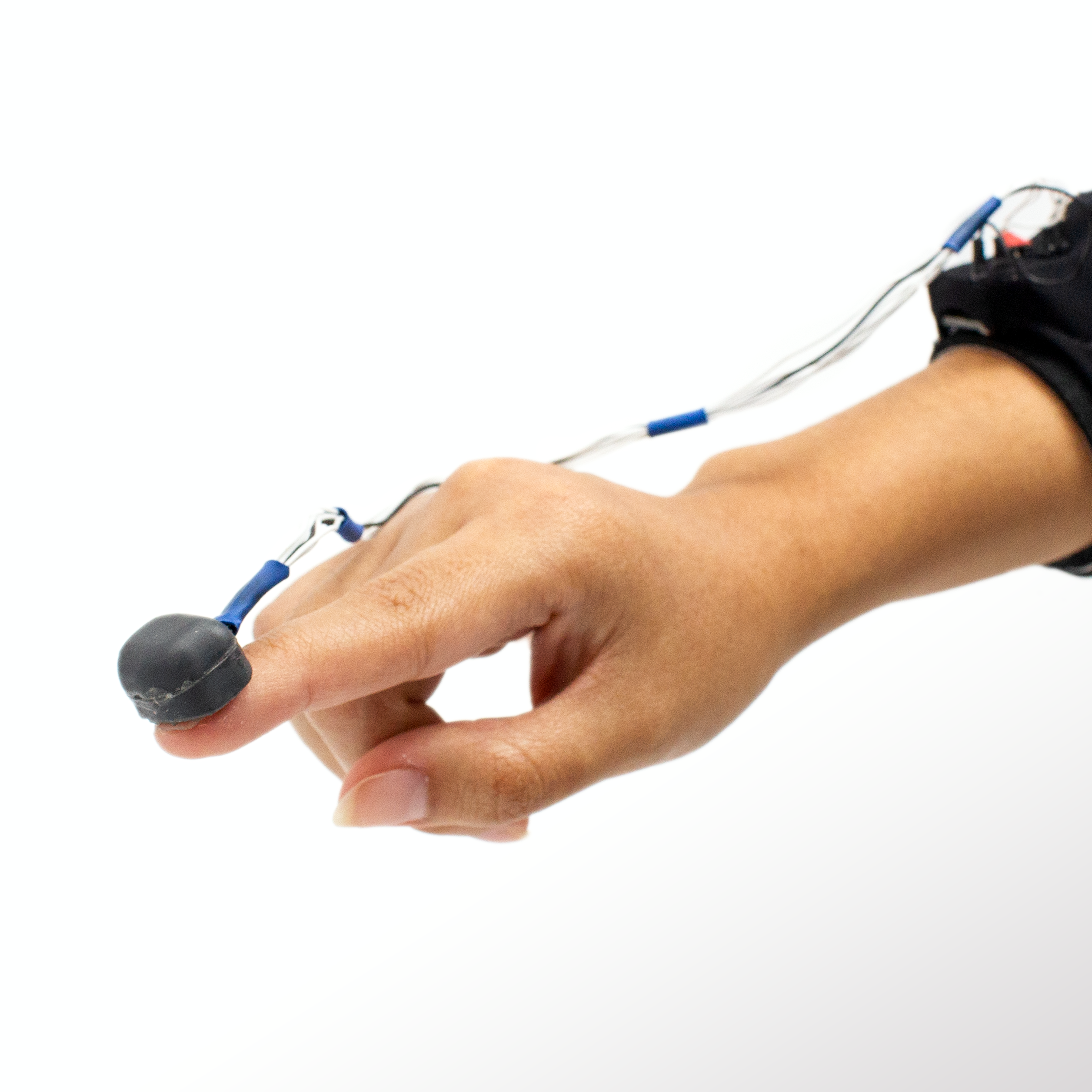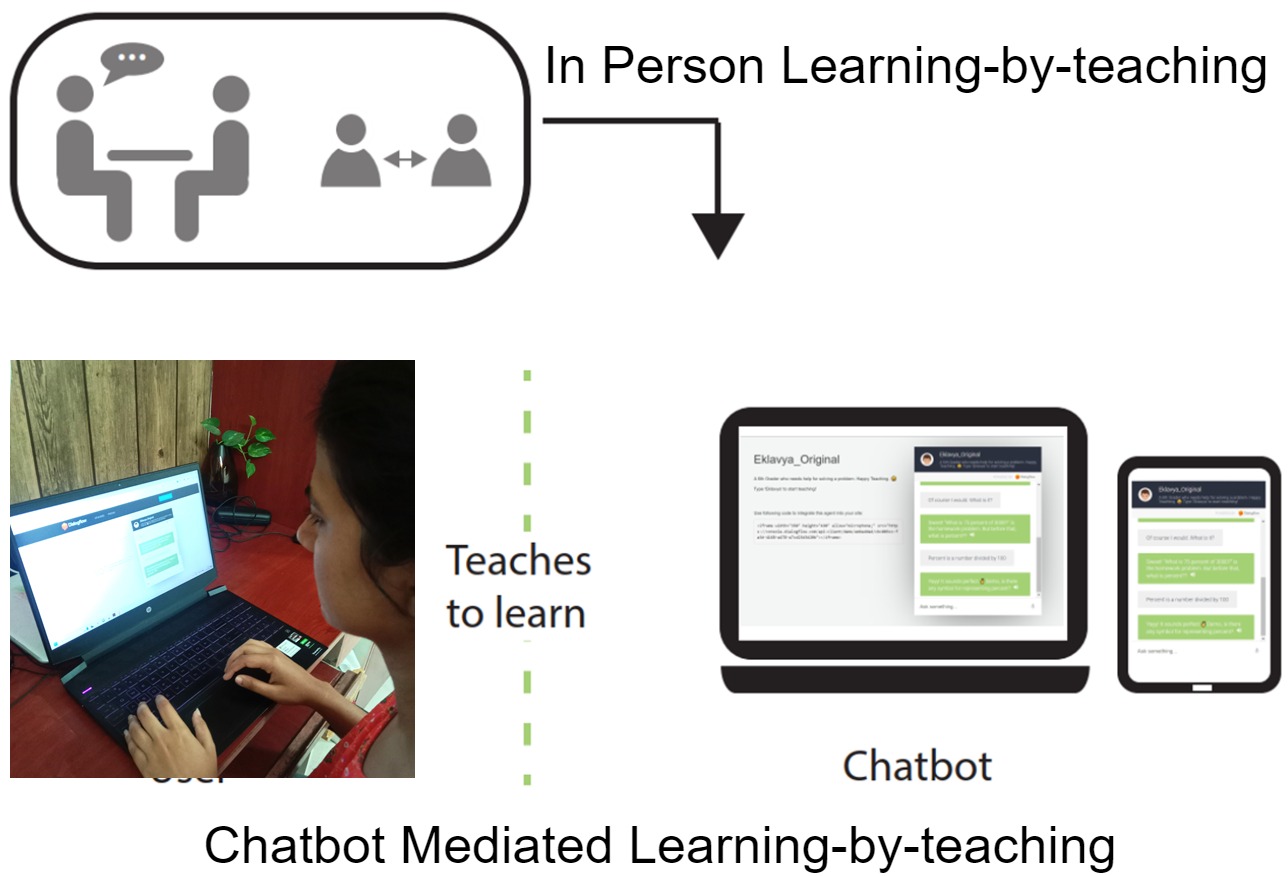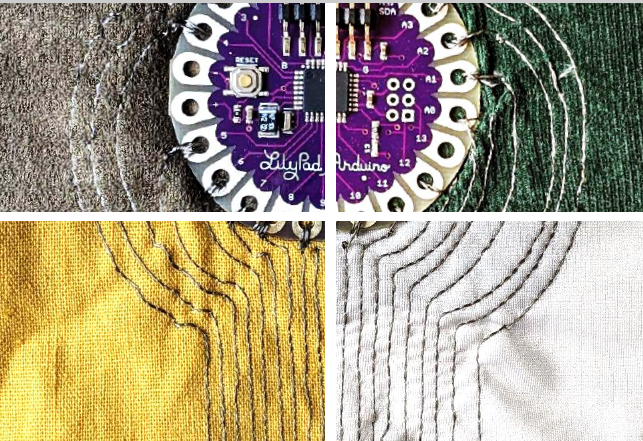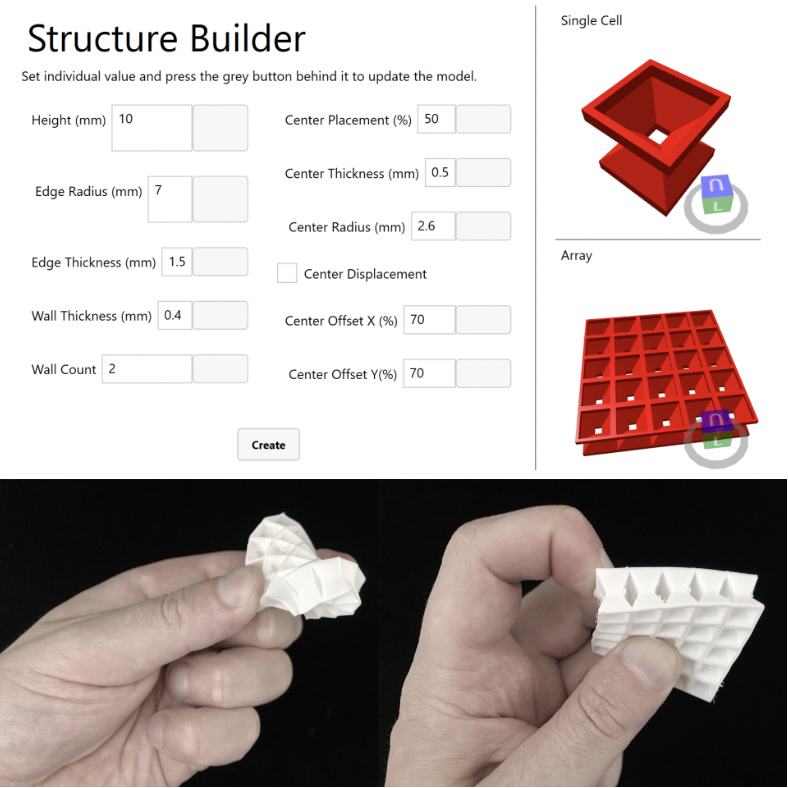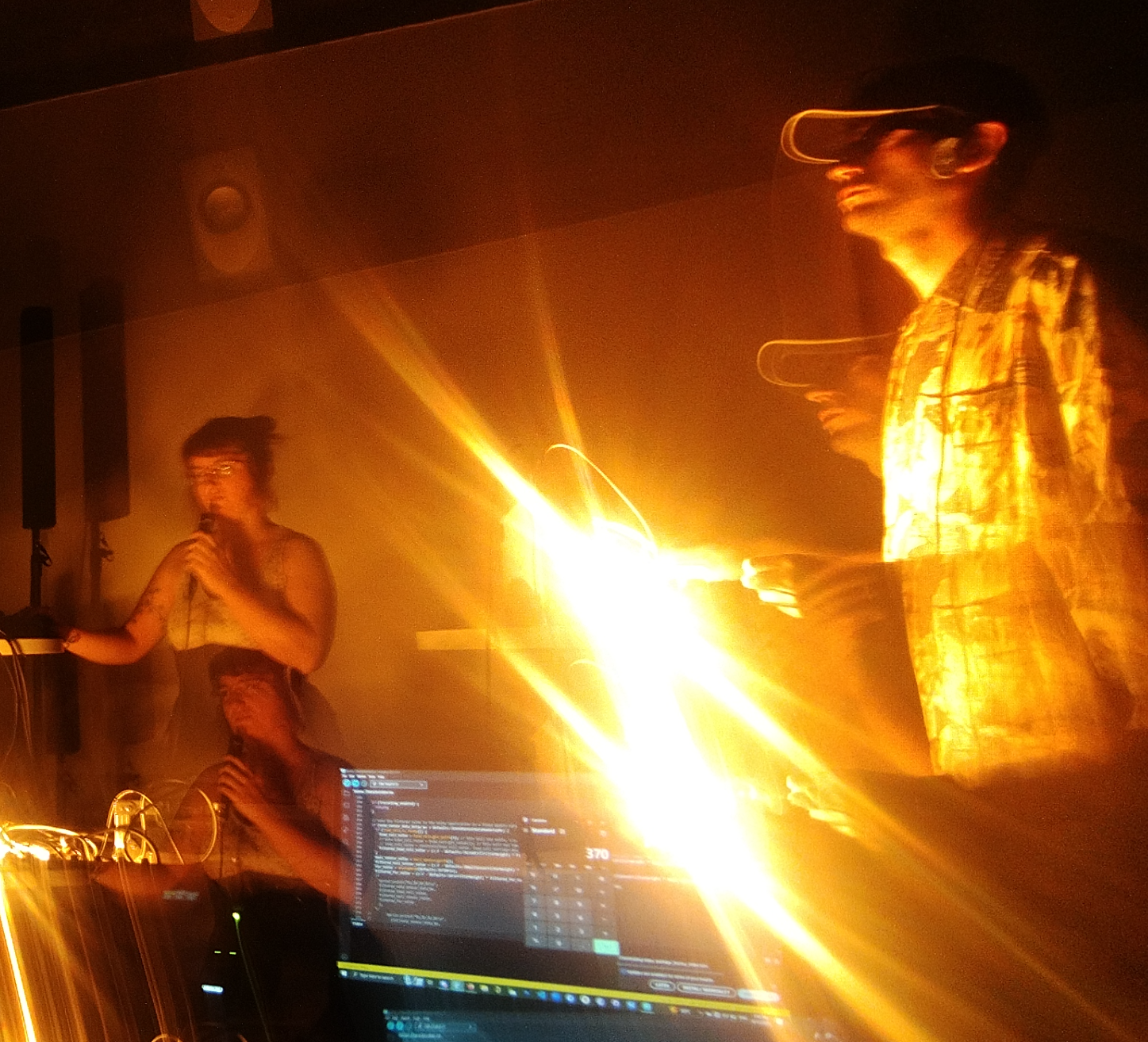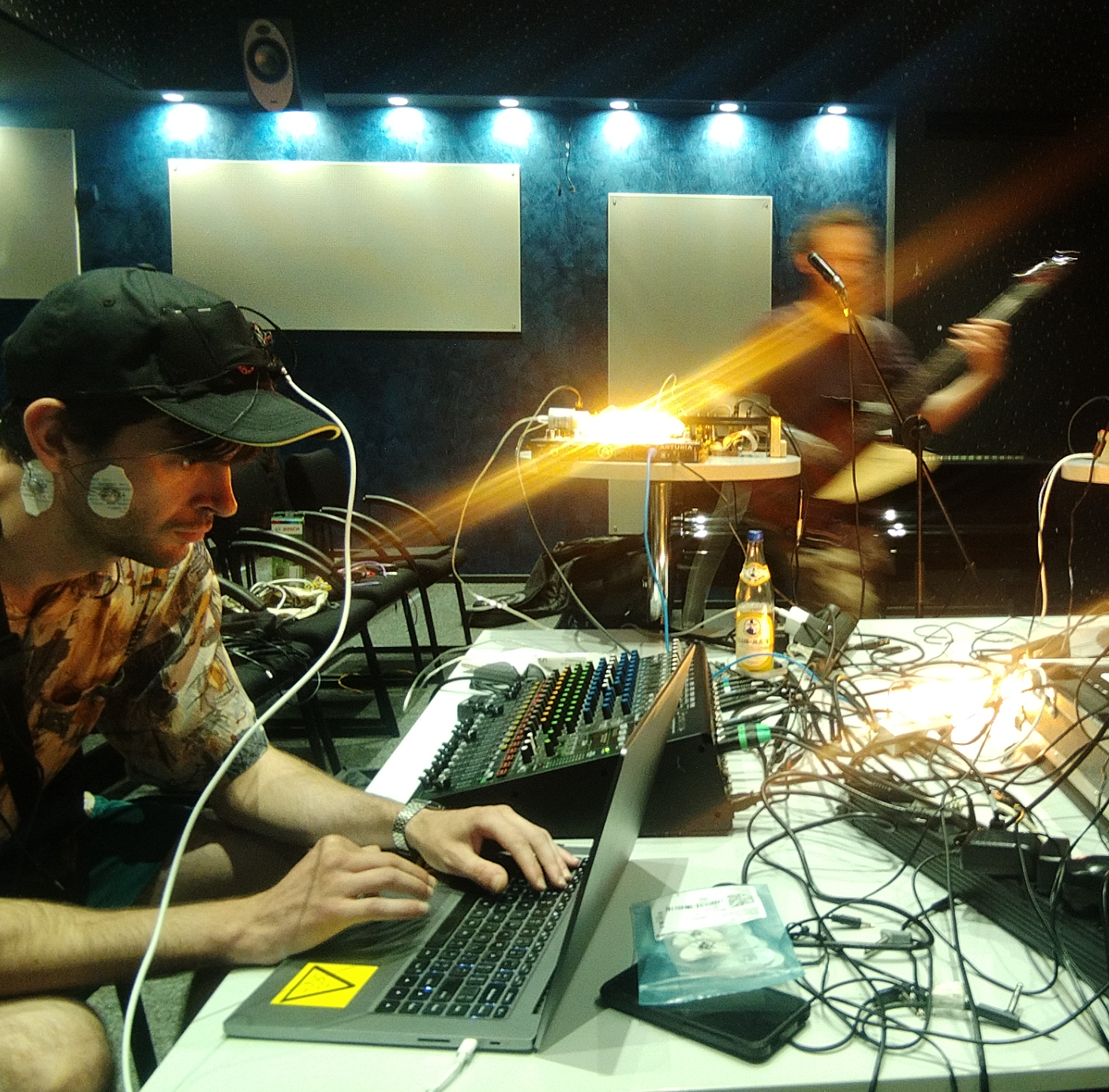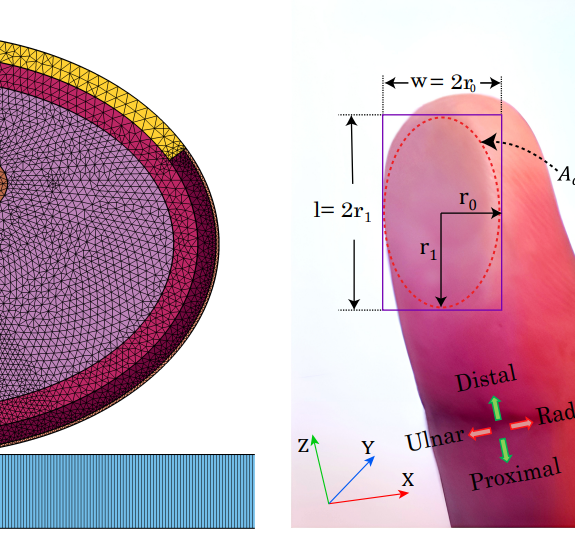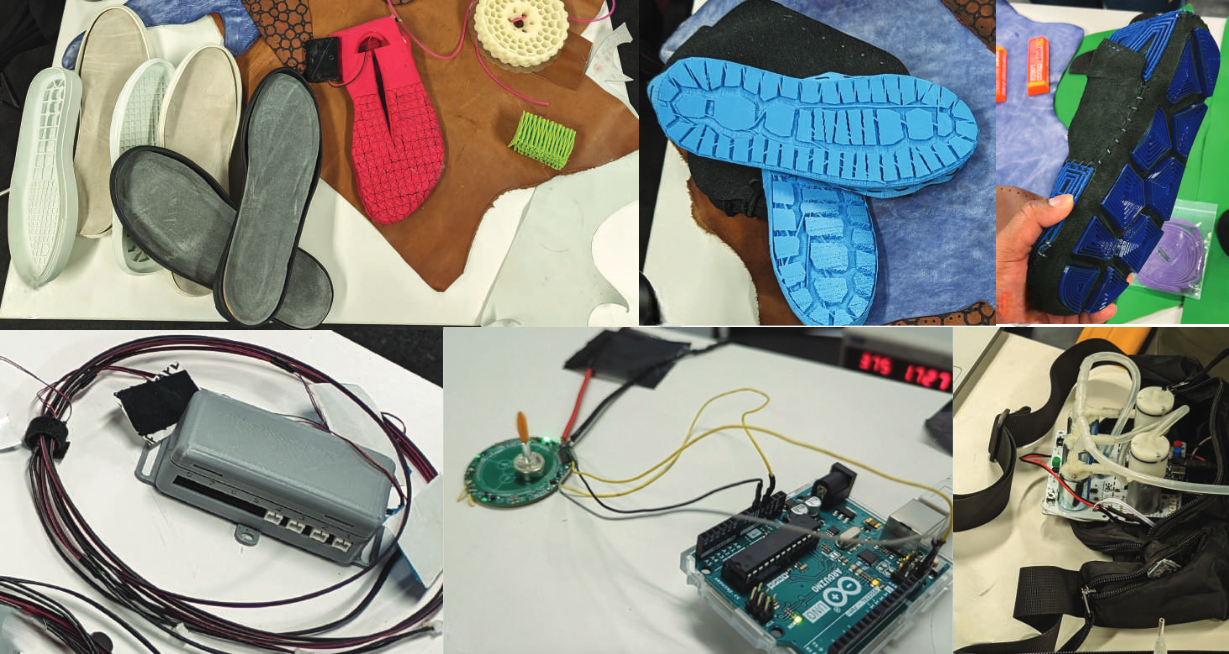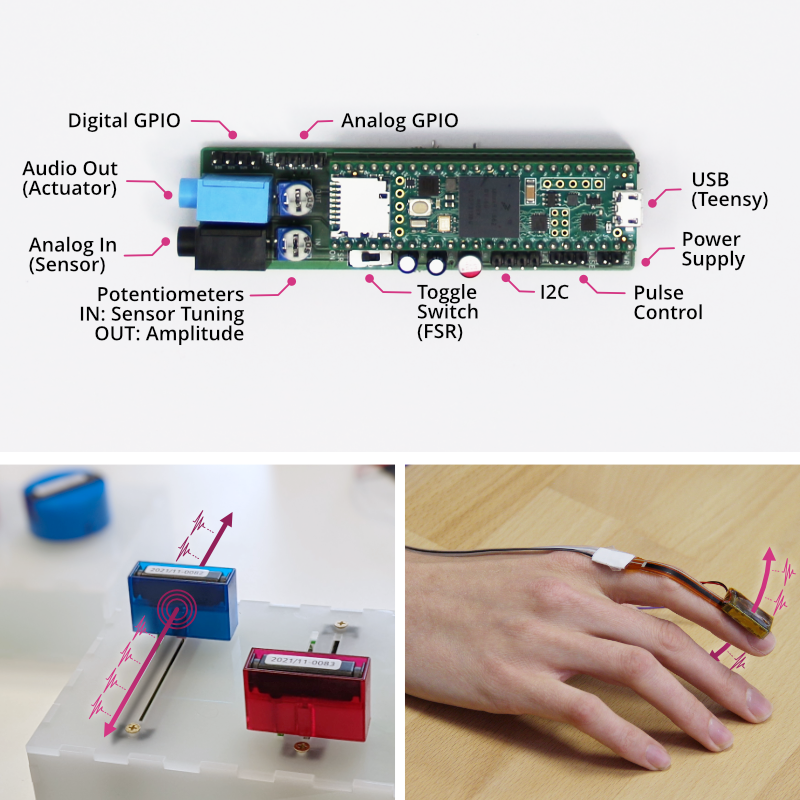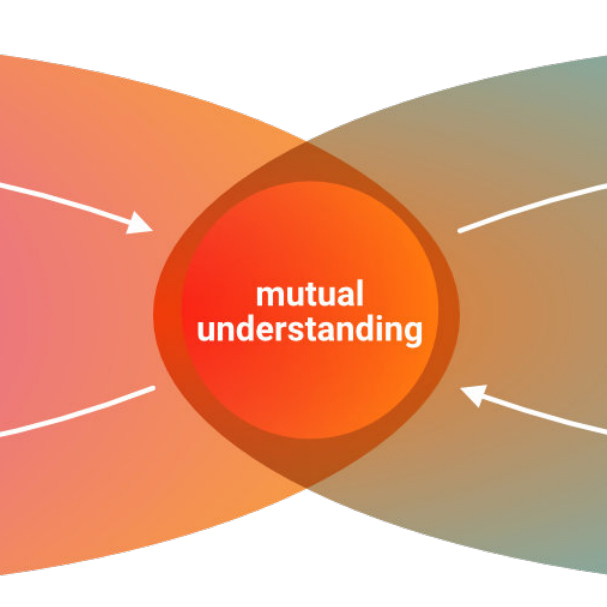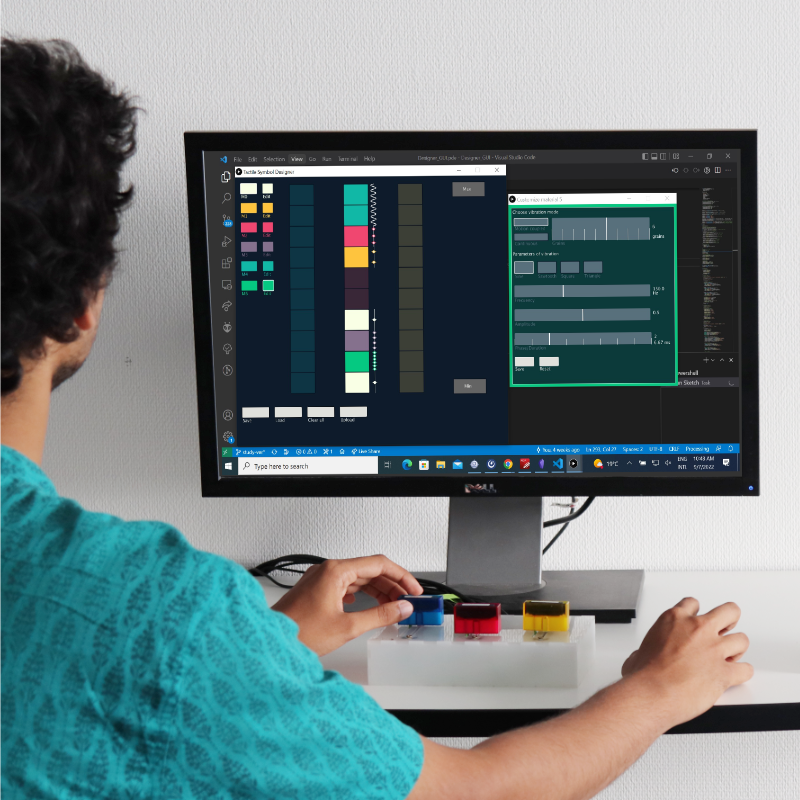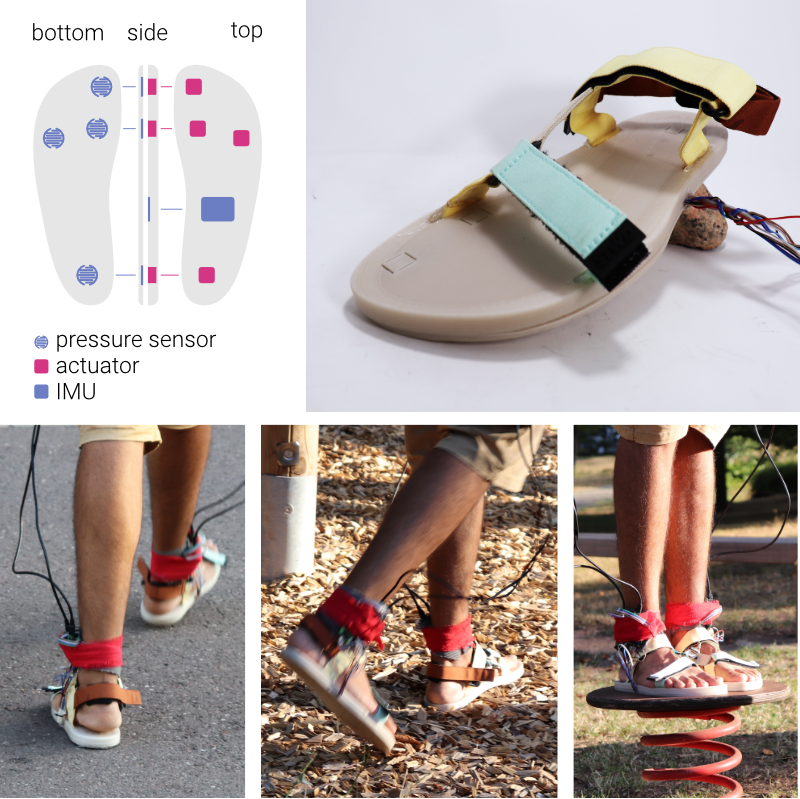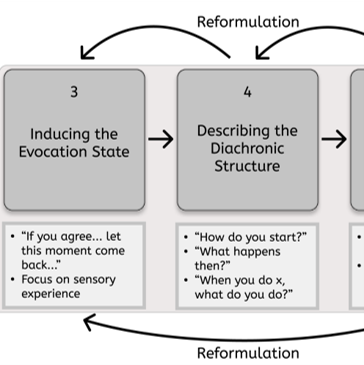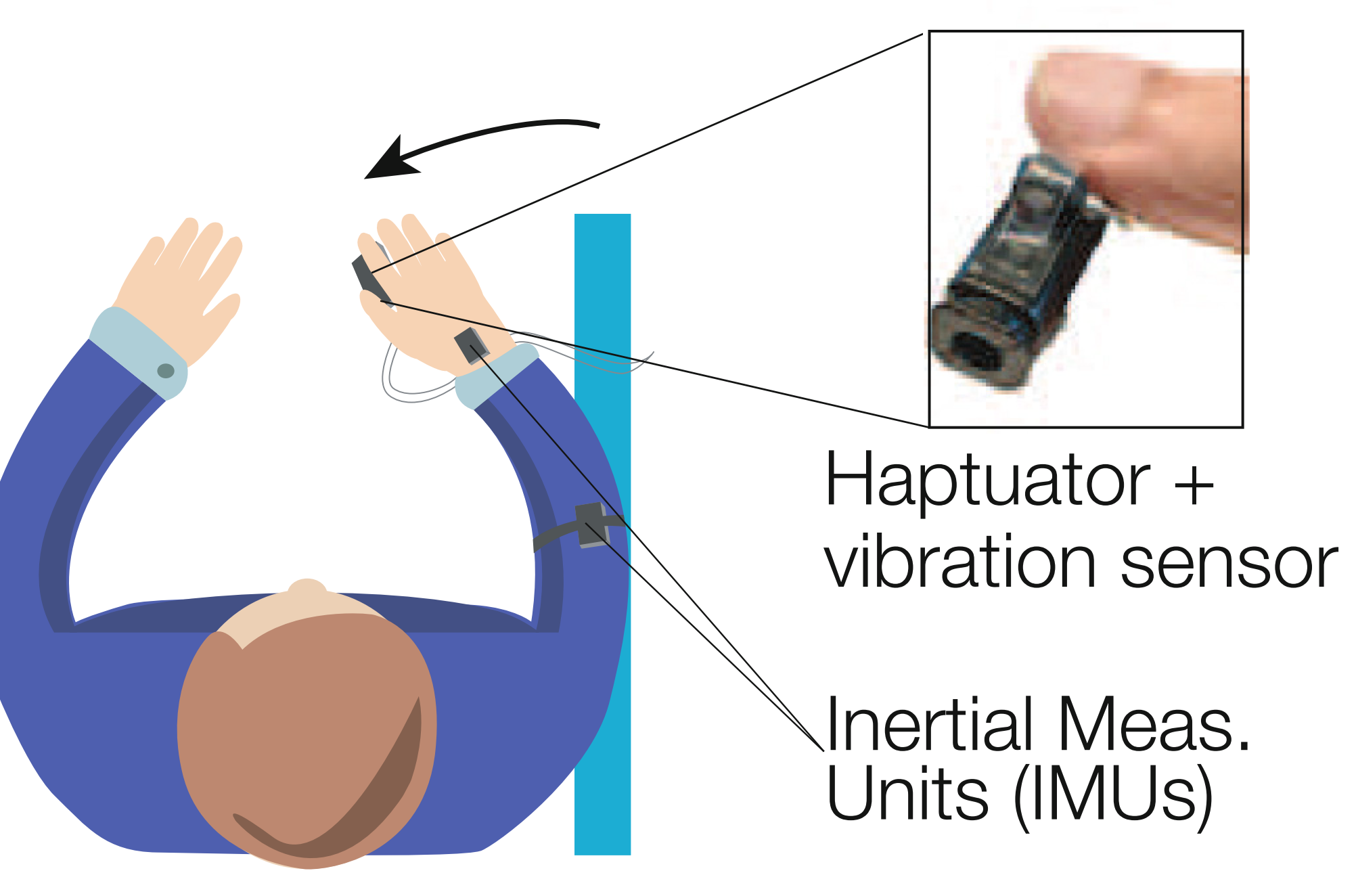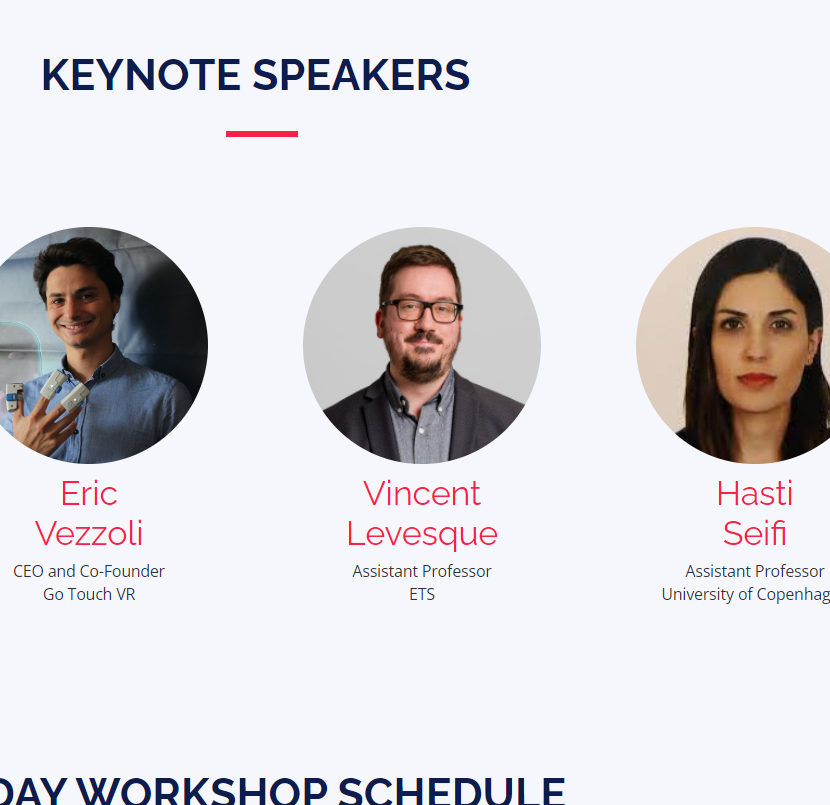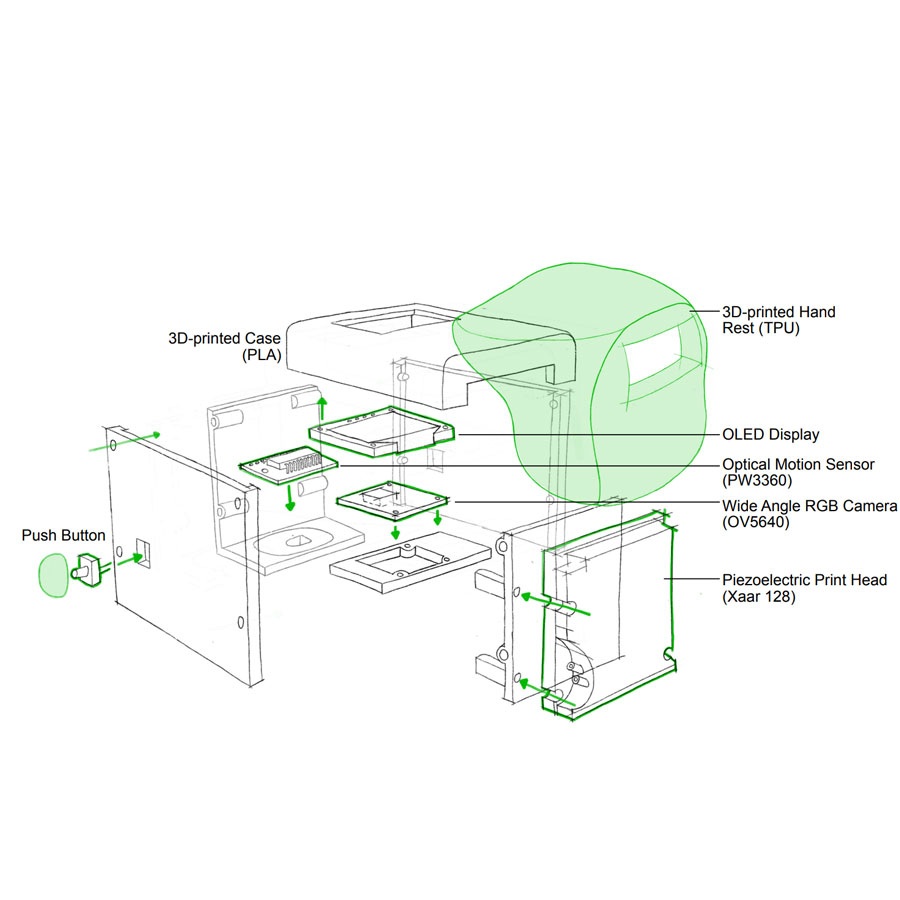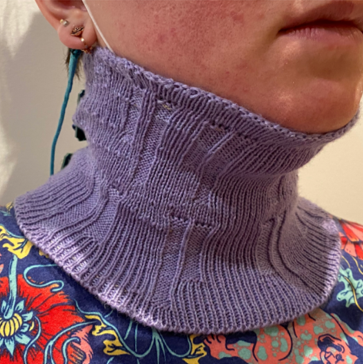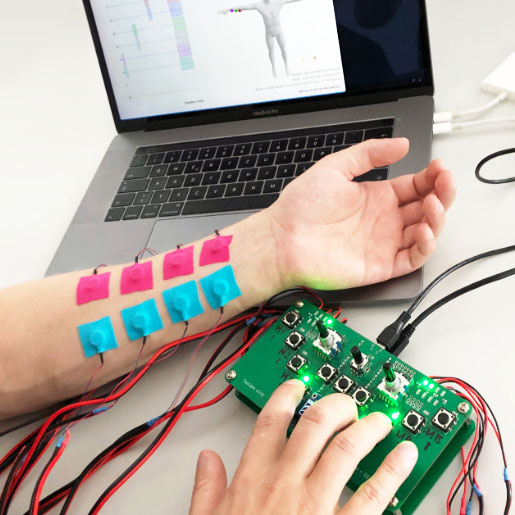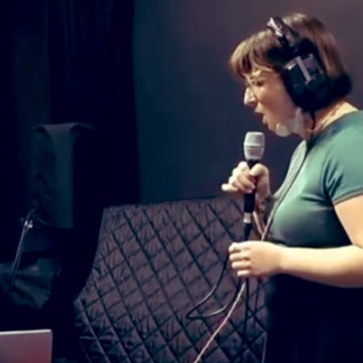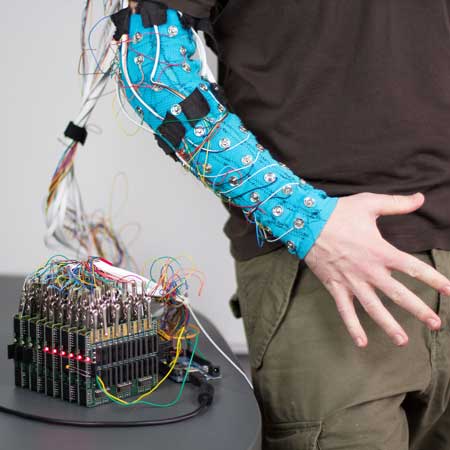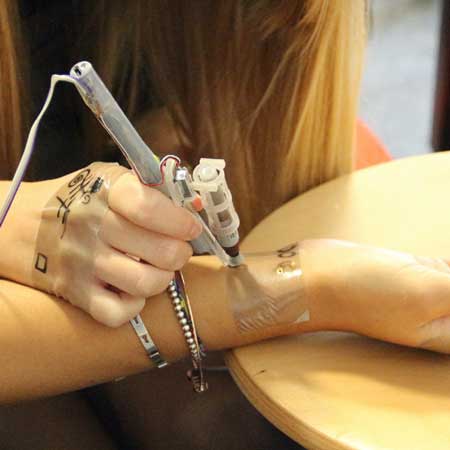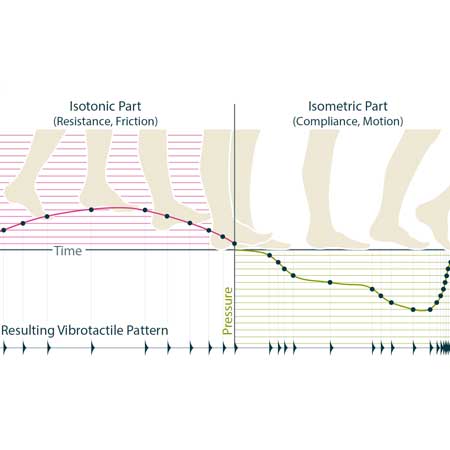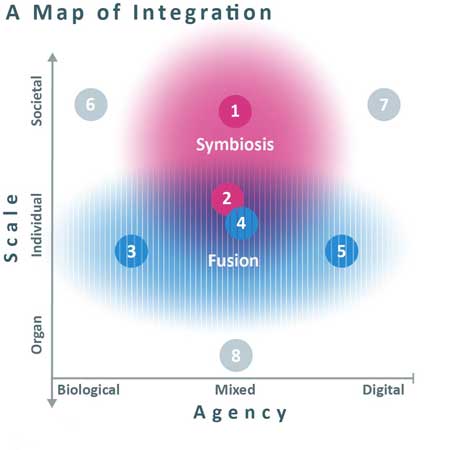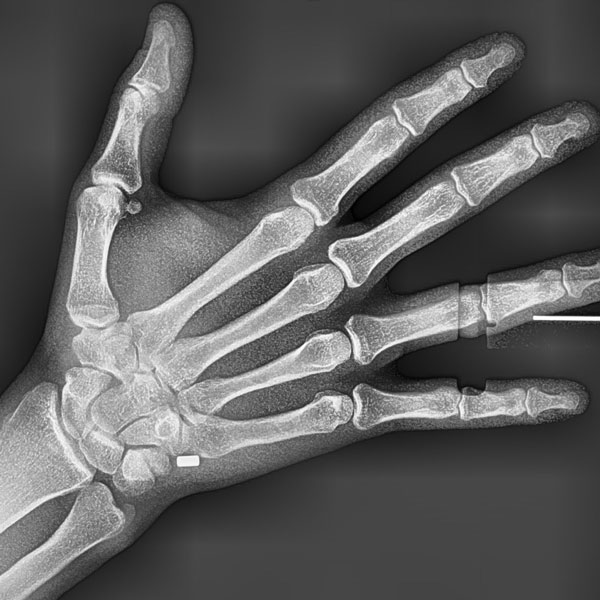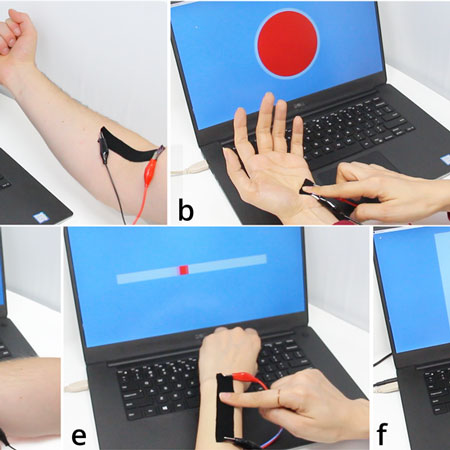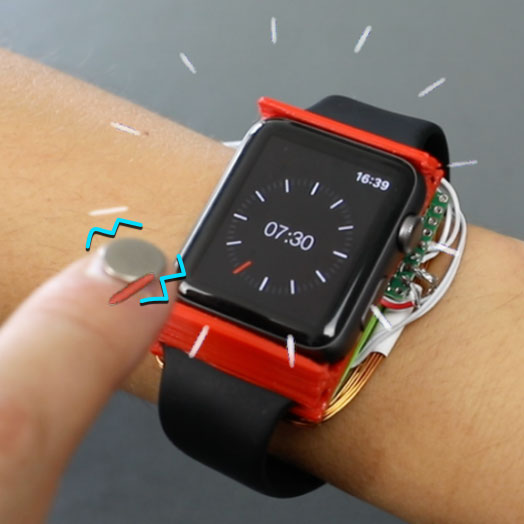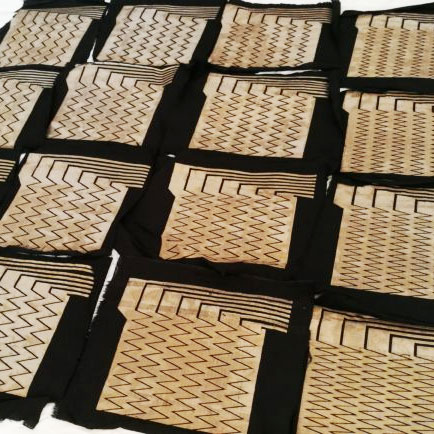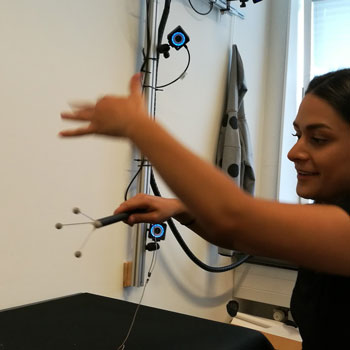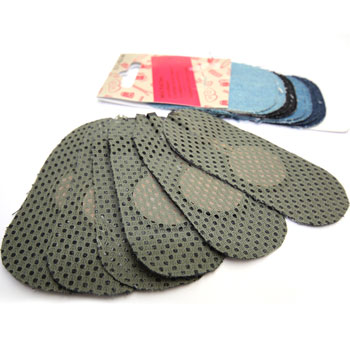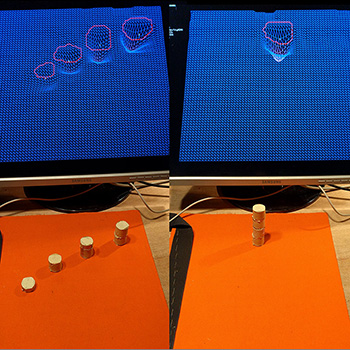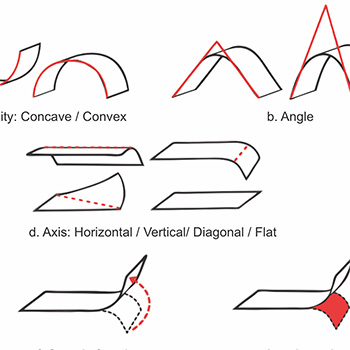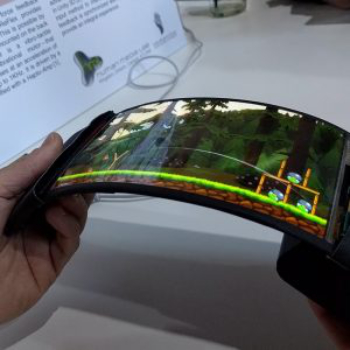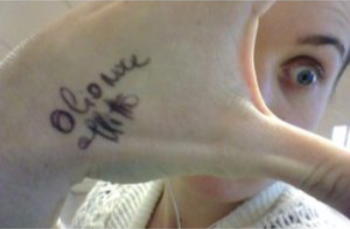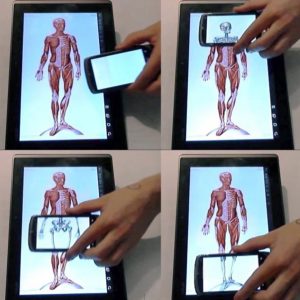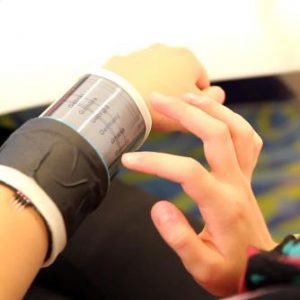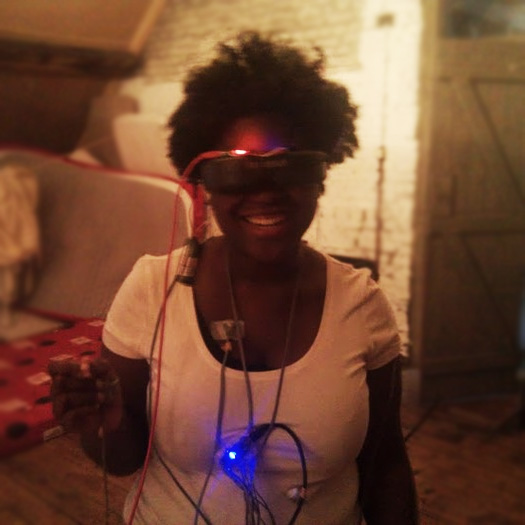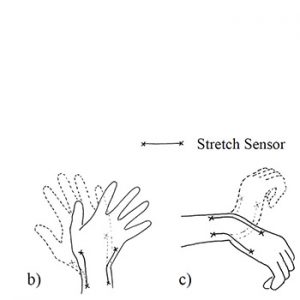Papers
Previous publications.
2025
Foot Pedal Control: The Role of Vibrotactile Feedback in Performance and Perceived Control
paperNihar Sabnis, Ata Otaran, Dennis Wittchen, Johanna K. Didion, Jürgen Steimle, Paul Strohmeier
in Tangible, Embedded, and Embodied Interaction (TEI '25)
This work evaluated four pedal configurations for abstract and ecological tasks. The results showed that vibrotactile rendering can improve the perceived control despite the objective performance remaining the same. This finding opens up opportunities to introduce vibrotactile feedback for helping users' gain confidence and feel that they are in control.
2024
Motionless Movement: Towards Vibrotactile Kinesthetic Displays
paperYuran Ding, Nihar Sabnis, Paul Strohmeier
in Human Factors in Computing Systems (CHI '24)
This paper presents a proof-of-concept kinesthetic display prototype. We explore how one might, using only vibration, present a sense of movement to a user. A user study showed that the tactile sense of movement we provide using vibration is stronger than that provided by a visual control task.
Shaping Compliance: Inducing Haptic Illusion of Compliance in Diferent Shapes with Electrotactile Grains
paperArata Jingu Nihar Sabnis, Paul Strohmeier, Jürgen Steimle
in Human Factors in Computing Systems (CHI '24)
Together with Saarland University's HCI Lab, we explored an implementation of the compliance illusion using an electrotactile display. We investigate some of the opportunities provided by this extraordinary actuator.
vARitouch: Back of the Finger Device for adding Variable Compliance to Rigid Objects
paperGabriela Vega, Valentin Martinez-Missir, Dennis Wittchen, Nihar Sabnis, Karen Cochraine, Audrey Girouard, Paul Strohmeier
in Human Factors in Computing Systems (CHI '24)
Just like visual augmented reality can add visual information to our experience of the world, we want tactile augmented reality to overlay additional tactile information. Here we present a system that can change the material properties of the physical world without interfering with regular tactile perception.
Empowering Learners: Chatbot-Mediated 'Learning-by-Teaching'
Extended AbstractNihar Sabnis, Tomohiro Nagashima
in Human Factors in Computing Systems (CHI '24)
We show how chatbots can be used as virtual students, to support "learning by teaching".
Base and Stitch: Evaluating eTextile Interfaces from a Material-Centric View
paperVineetha Rallabandi, Alice C. Haynes, Courtney N. Reed, Paul Strohmeier in Tangible, Embedded, and Embodied Interaction (TEI '24
in Tangible, Embedded, and Embodied Interaction (TEI '24)
We highlight the importance of materiality in textile sensor designs.
3D-Printed Cells for Creating Variable Softness
paperGabriela Vega, Valentin Martinez-Missir, Dennis Wittchen, Nihar Sabnis, Karen Cochraine, Audrey Girouard, Paul Strohmeier
in Tangible, Embedded, and Embodied Interaction (TEI '24)
In this work, we present a method for 3D printing objects with variable softness, inspired by mechanical metamaterials. By modifying parameters of individual cell geometries within a cellular structure, our approach and tool enables designers to rapidly prototype objects with adjustable softness for diverse applications. These structures can even be fabricated on commodity 3D printers.
RaveNET: Connecting People and Exploring Liminal Space through Wearable Networks in Music Performance
paperRachel Freire, Valentin Martinez-Missir, Courtney Reed, Paul Strohmeier
in Tangible, Embedded, and Embodied Interaction (TEI '24)
RaveNET connects people to music, enabling musicians to modulate sound using signals produced by their own bodies or the bodies of others. We present three wearable prototype nodes in an inaugural RaveNET performance. Bones, an anti-corset, uses capacitive sensing to detect stretch as the singer breathes. Tendons, a half-glove, measures galvanic skin response, pulse, and movement of the bass player’s hands. Veins, a cap with electrodes for surface electromyography, captures the facial expressions of the drum machine operator.
Liminal Space: A Performance with RaveNET
paperRachel Freire, Valentin Martinez-Missir, Courtney Reed, Paul Strohmeier
in Tangible, Embedded, and Embodied Interaction (TEI '24)
We present our musical performance exploration of liminal spaces, which focuses on the interconnected physicality of bodies in music, using biosignals and gestural, movement-based interaction to shape live performances in novel ways.
Who Did It? How User Agency is Influenced by Visual Properties of Generated Images
paperJohanna K. Didion, Krzysztof Wolski, Dennis Wittchen, David Coyle, Thomas Leimkühler, Paul Strohmeier
in User Interface Software and Technology (UIST '24)
Effect of Finger Orientation on Contact Stiffness and Area During Sliding
paperJahangier Ahmad, Easa AliAbbasi, MReza Alipour Sormoli, Cagatay Basdogan
in IEEE Transactions on Haptics Journal
We investigated how finger orientation affects the way we touch and feel surfaces. Our experimental findings show that the changes in the orientation of finger can alter the contact area and stiffness and hence, the frictional forces while exploring surfaces.
Foot Augmentation 101: Design your own Augmented Experiences
workshopDennis Wittchen, Nihar Sabnis, Troy Robert Nachtigall, Florian ‘Floyd’ Mueller, Paul Strohmeier, Don Samitha Elvitigala
in Tangible, Embedded, and Embodied Interaction (TEI '24)
This workshop focused on building foot augmentations collaboratively. Participants designed three prototypes, a) remote movement guidance, calling the shoe, increasing empathy.
2023
Haptic Servos: Self-Contained Vibrotactile Rendering System for Creating or Augmenting Material Experiences
paperNihar Sabnis, Dennis Wittchen, Courtney N. Reed, Narjes Pourjafarian, Jürgen Steimle, Paul Strohmeier
in Human Factors in Computing Systems (CHI '23)
This work introduces Haptic Servos.
Negotiating Experience and Communicating Information Through Abstract Metaphor
paperCourtney N. Reed, Paul Strohmeier, Andrew MacPherson
in Human Factors in Computing Systems (CHI '23)
Tactile Symbols with Continuous and Motion-Coupled Vibration: An Exploration of using Embodied Experiences for Hermeneutic
paperNihar Sabnis, Dennis Wittchen, Gabriela Vega, Courtney N. Reed, Paul Strohmeier
in Human Factors in Computing Systems (CHI '23)
We explore ways of mixing embodied and hermeneutic design.
Designing Interactive Shoes for Tactile Augmented Reality
paperDennis Wittchen, Valentin Martinez-Missir, Sina Mavali, Nihar Sabnis, Courtney N. Reed, Paul Strohmeier
in Augmented Humans (AHs '23)
We explore the design space of shoes for augmented tactile reality and present an open-source implementation from this space.
2022
Body-based user interfaces
paperPaul Strohmeier, Aske Mottelson, Henning Pohl, Jess McIntosh, Jarrod Knibbe, Joanna Bergström, Yvonne Jansen and Kasper Hornbæk
in Routledge Handbook of Bodily Awareness;)
An overview of Body-Based User Interfaces, highlighting four different perspectives taken by researchers.
Exploring Experiences with New Musical Instruments through Micro-phenomenology
paperCourtney N. Reed, Charlotte Nordmoen, Andrea Martelloni, Giacomo Lepri, Nicole Robson, Eevee Zayas-Garin, Kelsey Cotton, Lia Mice, Andrew McPherson
in New Interfaces for Musical Expression (NIME '22)
This work introduced micro-phenomenology to the muscial interaction research and design community. We explore interactions with digital musical instruments through micro-phenomenological disciplines to uncover fine-grained details in the interactions, particularly tactile connections and bodily sensations.
Pseudo Forces from Asymmetric Vibrations can Modulate Movement Velocity
Work in ProgressNihar Sabnis, Eline van der Kruk, David Abbink, Michaël Wiertlewski
in Eurohaptics 2022
This work showed that pseudo forces generated using asymmetric vibration can modulate direction and movement velocity.
Sustainable Haptic Design: Improving Collaboration, Sharing, and Reuse in Haptic Design Research
workshopOliver Schneider, Bruno Fruchard, Dennis Wittchen, Bibhushan Raj Joshi, Georg Freitag, Donald Degraen, Paul Strohmeier
in Human Factors in Computing Systems Extended Abstracts (CHI EA '22)
We co hosted a workshop to discuss topics such as reproduceability, sharing of data and methods, and communication and collaboration in haptic design research
Print-A-Sketch: A Handheld Printer for Physical Sketching of Circuits and Sensors on Everyday Surfaces
paperNarges Pourjafarian, Marion Koelle, Fjolla Mjako Paul Strohmeier, Jürgen Steimle
in Human Factors in Computing Systems (CHI '22)
Together with Saarland University’s HCI Lab, Paul designed a hand-held printer, for printing electrical circuits. This printer combines affordances of free-hand sketching with those of digital printing. We present a fully functional prototype, strategies for designing hand-held inking devices, and methods of interacting with them.
Singing Knit: Soft Knit Biosensing for Augmenting Vocal Performances
paperCourtney N. Reed, Sophie Skach, Paul Strohmeier, and Andrew P. McPherson
in Augmented Humans (AHs)
With friends from QMUL, we build a knit wearable collar, Singing Knit, to implement vocal EMG in a context-specific, wearability- and implementation-oriented device. The collar uses a knit body and fabric electrodes in place of a rigid multi-electrode setup. We introduce new ways to adapt multi-electrode systems.
TactJam: An End-to-End Prototyping Suite for Collaborative Design of On-Body Vibrotactile Feedback
paperDennis Wittchen, Katta Spiel, Bruno Fruchard, Donald Degraen, Oliver Schneider, Georg Freitag, Paul Strohmeier
in Tangible, Embedded, and Embodied Interaction (TEI '22)
The TactJam workshop we held at last year’s TEI was a full success. As the workshop was super interesting, the organizers and some participants came together to write up our observations as well as present the system. The contribution is not only a proven system for tactile design, but also reflections on how the tools we use shape the design outcomes.
Examining Embodied Sensation and Perception in Singing
Extended AbstractCourtney N. Reed
in Tangible, Embedded, and Embodied Interaction (TEI '22)
Courtney presented a synopsis of her PhD work at the TEI graduate consortium. The paper outlined studies in musical imagery and perception of the voice and body during singing practice, how EMG can be used to augment the vocalist-voice relationship, and studies exploring sensory experience with sonified EMG signals.
2021
Skill Sleeves: Designing Electrode Garments for Wearability
paperJarrod Knibbe, Rachel Freire, Marion Koelle, and Paul Strohmeier
in Tangible, Embedded, and Embodied Interaction (TEI '21)
Jarrod and I built a multi-electron sleeve for his research into EMS stimulation. We then invited Rachel Freire to join us in designing an updated version of that sleeve. This paper discusses this process and uses this to discuss the general concept of wearability. It was ages in the making. as Jarrod said "... and all it took was three weeks of writing -- and three years of talking about what to write".

Eyecam: Revealing Relations between Humans and Sensing Devices through an Anthropomorphic Webcam
paperMarc Teyssier, Marion Koelle, Paul Strohmeier, Bruno Fruchard, and Jürgen Steimle
in Human Factors in Computing Systems (CHI '21)
Marc Teyssier built another one of his creepy anthropomorphic objects. This time as a camera. He wanted to use it as commentary on how we design sensing technology. I was involved with the framing and writing of the paper.
Squish This: Force Input on Soft Surfaces for Visual Targeting Tasks
paperBruno Fruchard, Paul Strohmeier, Roland Bennewitz, and Jürgen Steimle
in Human Factors in Computing Systems (CHI '21)
This project developed from our interest in designing pressure input on the skin. We performed multiple experiments to better understand the overal space of providing pressure input on soft surfaces. One thing we noted is that our study setup generally produced much better results than the literature previously suggested. I advised on study design, and contributed to data analysis, framing and writing of the paper.
BodyStylus: Freehand On-Skin Design and Fabrication of On-Body Interfaces
paperNarjes Pourjafarian, Marion Koelle, Bruno Fruchard, Sahar Mavali, Konstantin Klamka, Daniel Groeger, Paul Strohmeier, and Jürgen Steimle
in Human Factors in Computing Systems (CHI '21)
Here we present a concept and prototype implementation of concurrent, computer-supported sketching and implementing of epidermal devices. In many ways this was one of the most complex systems I've ever worked on, as the interplay between all the elements from new materials (the gold ink we used and the various substrate options we worked with) to hacked sensing devices (the on-skin Anoto tracking) to mechanical engineering (the modified dual-purpose pen) turned out much more complex than anyone anticipated. My involvement included the evaluation (together with a large chunk of work which we ended up removing from the paper, hopefully to be published inthe future), conceptualization, framing and writing and simply making sure we don't get lost in the details.
2020
bARefoot: Generating Virtual Materials Using Motion Coupled Vibration in Shoes
paperPaul Strohmeier, Seref Gu¨ngo¨r, Luis Herres, Dennis Gudea, Bruno Fruchard, and Jürgen Steimle.
in User Interface Software and Technology (UIST '20)
This paper essentially implements the hypothetical system described in the 'practical implications' section of my thesis. I had lots of help on the hardware and example applications by some very talented students. Bruno designed the experiments together with me and implemented them. This paper is essentially a logical consequence of my 'Generating Haptic Textures' and 'Mid-Air Haptic Textures' papers.
PolySense: Augmenting Textiles with Electrical Functionality Using In-Situ Polymerization
paperCedric Honnet, Hannah Perner-Wilson, Marc Teyssier, Bruno Fruchard, Jürgen Steimle, Ana C. Baptista, and Paul Strohmeier.
in User Interface Software and Technology (UIST '20)
Next Steps for Human-Computer Integration
paperFlorian Floyd Mueller, Pedro Lopes, Paul Strohmeier, Wendy Ju, Caitlyn Seim, Martin Weigel, Suranga Nanayakkara, Marianna Obrist, Zhuying Li, Joseph Delfa, Jun Nishida, Elizabeth M. Gerber, Dag Svanaes, Jonathan Grudin, Stefan Greuter, Kai Kunze, Thomas Erickson, Steven Greenspan, Masahiko Inami, Joe Marshall, Harald Reiterer, Katrin Wolf, Jochen Meyer, Thecla Schiphorst, Dakuo Wang, and Pattie Maes.
in User Interface Software and Technology (UIST '20)
Novel Input and Output Opportunities Using an Implanted Magnet
paperPaul Strohmeier and Jess McIntosh
in Augmented Humans (AHs '20)
Sketching On-Body Interactions Using Piezo-Resistive Kinesiology Tape
paperPaul Strohmeier, Narjes Pourjafarian, Marion Koelle, Cedric Honnet, Bruno Fruchard, and J¨urgen Steimle
in Augmented Humans (AHs '20)
2019
Magnetips: Combining Fingertip Tracking and Haptic Feedback for Around-Device Interaction
paperJess McIntosh, Paul Strohmeier, Jarrod Knibbe, Sebastian Boring, and Kasper Hornbæk
in Human Factors in Computing Systems (CHI'18)
Grappler: Array of bistable elements for pinching net-like infrastructure to low gravity bodies
paperJuliana Cherston, Paul Strohmeier, Joe Paradiso.
in AIAA Scitech 2019 Forum
2018
From Pulse Trains to “Coloring with Vibrations”: Motion Mappings for Mid-Air Haptic Textures
paperPaul Strohmeier , Sebastian Boring and Kasper Hornbæk
in Human Factors in Computing Systems (CHI'18)
In this paper we explore rendering textures in 3D space. As our feedback system does not provide the counter-force one experiences when interacting with a surface texture, it is not clear how such mid-air textures might be perceived. We present a qualitative analysis of the experience of interacting with mid-air textures, and how input parameters influence this experience.
zPatch: Hybrid Resistive/Capacitive eTextile Inputs
paperPaul Strohmeier, Jarrod Knibbe, Sebastian Boring and Kasper Hornbæk
in Tangible, Embedded, and Embodied Interaction (TEI)
Touch input on clothing is difficult as there are ample opportunities for unintentional activation. In this paper we present a simple fabric design that acts as both a resistive and a capacitive sensor. We present instructions on how to build it and we demonstrate that the resulting hybrid sensor is more robust than either resistive- or capacitive-only equivalents and that the additional information improves the detection of custom gestures.
2017
Designing a Multi-Touch eTextile for Music Performances
paperMaurin Donneaud, Cedric Honnet, Paul Strohmeier
in New Instruments for Musical Expression (NIME) 2017
This paper presents a fabric multi-touch sensor that is used as an audio-controller. The sensor was designed by Maurin Donneaud with assistance by Cedric Honnet on the embedded software development. I conducted the evaluation with Cedric and did the analysis as well as the paper write-up.
Generating Haptic Textures with a Vibrotactile Actuator
paperPaul Strohmeier, Kasper Hornbæk
in Human Factors in Computing Systems (CHI) 2017
When we move our finger over a material, the structure of the fingertip and the structure of the material interact – they generate vibration. These vibrations are experienced as textures. In this paper we explore how properties of such vibrations map to experiences of texture.
Automatic Calibration of High Density Electric Muscle Stimulation
paperJarrod Knibbe, Paul Strohmeier, Sebastian Boring and Kasper Hornbæk
in Interactive, Mobile, Wearable and Ubiquitous Technologies (IMWUT)
Using methods presented in this paper we could in the future record the skilled movement of an expert musician and play them back using the hands and fingers of a novice. I assisted in designing the electronics and implemented the circuitry.
Special Topic: Taking Action in a Changing World.
commentaryAnn Light, Chris Frauenberger, Jennifer Preece, Paul Strohmeier, and Maria Angela Ferrario (2017)
in ACM Interactions Magazine

Casey Fiesler, Lisa Anthony, Paul Strohmeier, Susan Fussell, Gloria Mark
commentaryTaking Action in a Changing World: Research and Community
in Extended Abstracts on Human Factors in Computing Systems (CHI EA)
Second Skin: An Exploration of eTextile Stretch Circuits on the Body
interactive artRachel Freire, Cedric Honnet, Paul Strohmeier
in Tangible, Embedded and Embodied Interaction (TEI)
2016
An Evaluation of Shape Changes for Conveying Emotions
paperPaul Strohmeier, Juan Pablo Carrascal, Bernard Cheng, Margaret Meban, Roel Vertegaal
in Human Factors in Computing Systems (CHI)
In a world in which we use shape changing and malleable interfaces, can we use these to subtly express and transmit emotions using shape and shape transitions?
ReFlex: A Flexible Smartphone with Active Haptic Feedback for Bend Input
paperPaul Strohmeier, Jesse Burstyn, JP Carrascal, Vincent Levesque Roel Vertegaal
in International Conference on Tangible, Embedded, and Embodied Interaction (TEI) 2016
We presented the first fully functional, wireless flexible phone. In cooperation with Immersion we augmented the phone with a haptic actuator. This allows us to change how the material properties of the phone are experienced. We conducted studies investigating bend-input mappings to haptic feedback styles.
What can Doodles on the Arm teach us about On-Body Interaction?
poster/demoPaul Strohmeier, Juan Pablo Carrascal, Kasper Hornbæk
in Extended Abstracts on Human Factors in Computing Systems (CHI EA)
While on-body interaction is treated as a novel concept in HCI, we point out that it is not necessarily the case. One way in which on-body interaction is quite common is the habit of doodling or writing notes on one’s arm. We presented a survey that explores this practice, in hope that it may serve as inspiration for future HCI explorations.

Developing an Ecosystem for Interactive Electronic Implants
poster/demoPaul Strohmeier, Cedric Honnet, Samppa Von Cyborg
in Living Machines – Biomimetic and Biohybrid systems – Springer LNAI Series (LM)
This is a write-up of a little hackathon of Cedric Honnet and myself. We designed and implemented the implant presented in this paper from scratch within 7 days. Samppa von Cyborg supported with process by helping us understand the physical constraints presented by current body-mod methods
Exploring Bodies, Mediation and Points of View using a Robotic Avatar
interactive artPaul Strohmeier
in Tangible, Embedded and Embodied Interaction (TEI)
2015
DisplaySkin: Exploring pose-aware displays on a flexible electrophoretic wristband
paperJesse Burstyn, Paul Strohmeier, Roel Vertegaal
in Tangible, Embedded, and Embodied Interaction (TEI)
Watches became popular because of the fast and intuitive way in which they can be used. Smartwatches typically are more complex, requiring menu navigation or activation gestures. This paper explores a method of adapting a watch face to the users body pose to make interactions with a smartwatch easier.
Printput: Resistive and capacitive input widgets for interactive 3D prints
paperJesse Burstyn, Nicholas Fellion, Paul Strohmeier, Roel Vertegaal
in IFIP TC.13 Conference on Human-Computer Interaction (INTERACT)
3d printing is becoming increasingly more useful as a prototyping method. The methods in this paper provide a way to add sensors directly to a 3d print. I contributed sensor designs.
DIY IR sensors for augmenting objects and human skin
poster/demoPaul Strohmeier
in Augmented Human (AH)
I presented various IR based sensors that I had designed over the previous years.
Effects of display sizes on a scrolling task using a cylindrical smartwatch
poster/demoPaul Strohmeier, Jesse Burstyn, Roel Vertegaal
in Human-Computer Interaction with Mobile Devices and Services (MobileHCI)
Using the prototype I built for my master’s thesis, we investigated how different display sizes effected interactions, while keeping the input surface constant.
2014
Mediated Touch: Exploring embodied design for remote presence
paperPaul Strohmeier, Ike Kamphof
in International Society for Presence Research (ISPR)
We present an exploration of how people experience communication through a humanoid telerobot

Mood fern: exploring shape transformations in reactive environments
interactive artBernard Cheng, Antonio Gomes, Paul Strohmeier, Roel Vertegaal
in Advances in Computer Entertainment Technology (ACE)
2013
PaperTab: an electronic paper computer with multiple large flexible electrophoretic displays
poster/demoAneesh Tarun, Peng Wang, Audrey Girouard, Paul Strohmeier, Derek Reilly, Roel Vertegaal
in Extended Abstracts on Human Factors in Computing Systems (CHI EA)
PaperTab is a multi-device ecology that harnesses strengths of pen-and paper interaction as well as digital systems. I contributed interaction concepts as well as initial sensor designs.
2012
With a flick of the wrist: stretch sensors as lightweight input for mobile devices
paperPaul Strohmeier, Jesse Burstyn, JP Carrascal, Vincent Levesque Roel Vertegaal
in International Conference on Tangible, Embedded, and Embodied Interaction (TEI) 2016
I designed a basic motion-capture method that can be embedded into clothing using stretch sensors.
A Flock of Birds: bringing paper to life
interactive artPaul Strohmeier, Kaja Vembe Swensen, Cameron Lapp, Audrey Girouard, Roel Vertegaal
in Tangible, Embedded and Embodied Interaction (TEI)
2011
Irrigating Kagan’s Desert
paperFrederike Kaltheuner, Paul Strohmeier
in Maastricht Journal of Liberal Arts
Frederike and I wrote this essay to point out that the model of distributive justice used by Shelley Kagan is based on a set of normative assumptions. It is therefore only ‘intuitive’ to people who share his assumptions. We demonstrate how his model would change if the initial assumptions change.
•••
Demo Hour
showcaseJinsil Hwaryoung Seo, Annie Sungkajun, Meghan Cook, Young Suk Lee, Susanna Hertrich, Akitoshi Honda, Rachel Freire, Paul Strohmeier, Cedric Honnet
in ACM Interactions Magazine

PaperTab: tablets as thin and flexible as paper
showcaseAneesh Tarun, Peng Wang, Paul Strohmeier, Audrey Girouard, Derek Reilly, Roel Vertegaal
in Extended Abstracts on Human Factors in Computing Systems (CHI EA)
